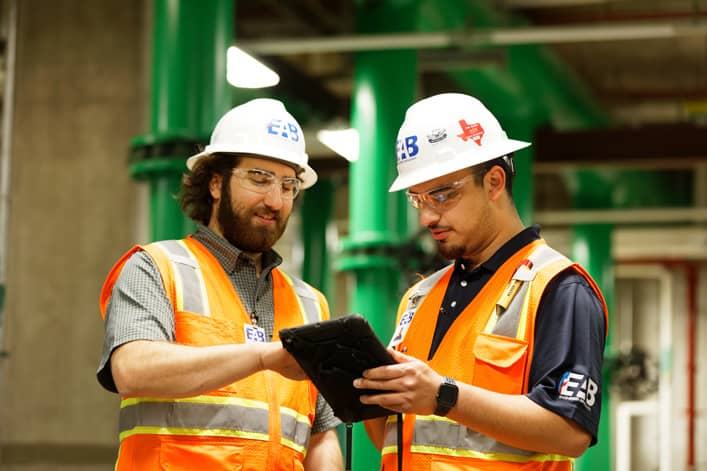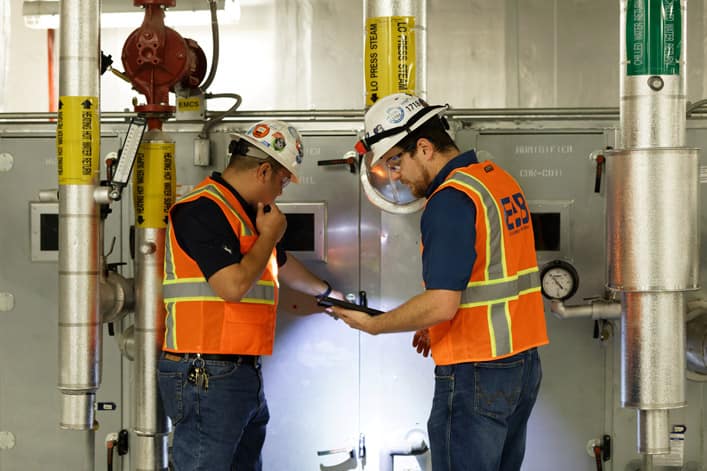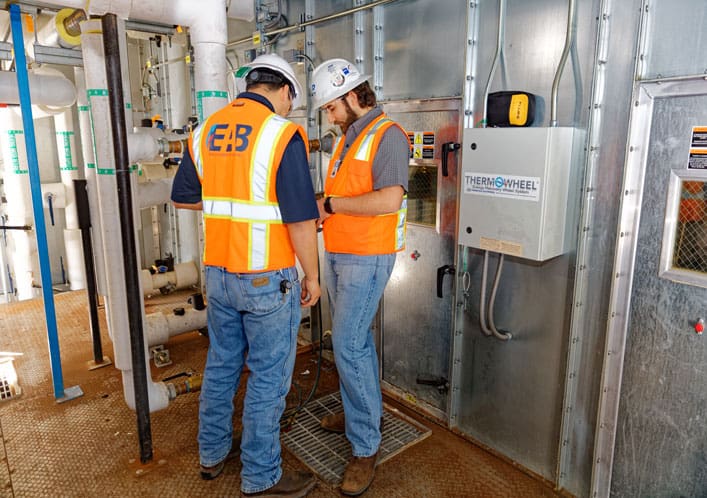
What are healthcare facilities?
The term Healthcare Facility describes a large category of facilities whose primary purpose is to care for the well-being of people. The facilities in this category vary in size and complexity. A small health clinic or a dentist office falls on one end of the spectrum while multi-story or multi-building hospital and research campuses fall on the opposite end. The common attribute separating healthcare facilities from most other facilities is a heightened need to protect the health of patients and staff within. A patient’s health may be compromised from disease, or patient may be more susceptible to infection due to services they receive at the facility (e.g., surgery). Additionally, staff within a healthcare facility are at greater risk of exposure to infectious diseases due to the greater frequency and proximity to those diseases. For these reasons, healthcare facilities require more precise monitoring and control of their building operation systems and require a greater number of hazard prevention and mitigation systems compared to other facility categories. The increased number of building control systems and the need for more precise monitoring and control of those systems makes Healthcare Facility Commissioning a vital service for building owners and operators.
Commissioning is the process of verifying the operation of equipment and systems within a facility to ensure design intent is met or exceeded. The need for healthcare facility commissioning is paramount to ensure the final operation of a facility protects patients and staff in accordance with the engineering design and the goals of the building owner or operator. Compared to other facility categories, healthcare facilities require many more considerations when designing HVAC (Heating, Ventilating, and Air Conditioning), Power, and other systems.
HVAC Systems

HVAC systems control the quality of air within a space. Parameters such as temperature and humidity control are common to most facility HVAC systems. However, HVAC systems within healthcare facilities are designed to cover a wider range of temperature and humidity control parameters when compared with most facilities. Additionally, healthcare facility HVAC systems are typically required to contain and filter a variety of air contaminants to ensure the safety of all occupants.
Temperature and humidity control seem like trivial issues for most facilities, but an operating room suite must be precisely controlled to protect a patient in their most vulnerable condition. Temperature and humidity control systems and sensors are tested and calibrated during the commissioning process.
Pressurization, which directly controls airflow direction from space to space, is one of the most common considerations for healthcare facility HVAC systems. Contaminated air must be contained and properly treated before it can be removed from a space. Many spaces within healthcare facilities are designed with cascading pressurization from “clean” to “dirty” spaces. For example, a pharmacy within a hospital will contain a “clean” room for preparing sensitive medication, a “dirty” room for mixing toxic chemicals like chemotherapy drugs, and an Ante room which separates the two rooms, serving as a buffer room between the “clean” and “dirty” spaces. The Ante room also serves to separate the controlled rooms from the rest of the hospital. Pressure is higher in the “clean” areas and lower in the “dirty” areas. This forces the air to flow out of spaces that should not be contaminated and into spaces that need to be contained. The HVAC commissioning process ensures that the designed pressurization relationships between controlled spaces are preserved for all modes of operation and in the event of an equipment failure.
Smoke containment systems use pressurization, in conjunction with physical barriers that close in the event of a fire emergency, to contain or evacuate smoke. Many patients occupying healthcare facilities are connected to life-sustaining equipment and cannot be moved. The HVAC system must be able to evacuate smoke from these sensitive areas. Special smoke detection and removal systems are built into the HVAC system and must be tested in all modes of operation during the commissioning process.
Power Systems
Electricity is vital to the operation of life-saving equipment used in healthcare facilities. Additionally, electricity is required to power the HVAC, plumbing, communication, and other systems within a healthcare facility. A tiered power scheme is used to ensure that electricity is supplied to all vital systems in the event of an emergency. Battery backup and on-site backup power generation equipment is regulated by sophisticated control systems that switch between all forms of incoming power. Details such as the type and number of outlets and the type of wiring used are all important to meet design criteria. Each system must be thoroughly inspected for correct installation and the operation of each system must be tested during the commissioning process.
Other Systems

Domestic hot water delivery systems must be able to produce the designed flow rates to ensure hot water is available at fixtures within the prescribed time limit. Additionally, temperature limiting equipment must ensure the maximum water temperature is not exceeded at the fixture. Pumps, mixing valves and other domestic hot water deliver components should be tested to ensure proper operation.
Med Gas and Vacuum systems are vital systems that require continuous operation. Equipment must be controlled in a way that ensures systems are always operational, allowing for serviceability and ensuring even wear. Bottle storage areas must be inspected to ensure safety systems are in place and are operational.
Communication systems allow staff to request assistance in the event of an emergency and communicate vital details to other team members. Automatic and user-triggered alarms warn staff of an emergency using audible and visual signals. Specialized communication systems, like infant monitoring and patient tracking systems are vital to keeping patients safe. All communication systems should be tested to ensure they are operating as designed. Each of these systems can fall under the scope of healthcare facility commissioning.
Compared to most facility categories, healthcare facilities contain systems that are more complex and designed to operate under a wider variety of design parameters. Therefore, healthcare facility commissioning is a vital service to ensure the buildings that are designed to help people in their most vulnerable states, are operating as they are designed. EAB’s commissioning team is staffed with well trained and knowledgeable teams that are ready make sure any facility is operating at its greatest potential.
